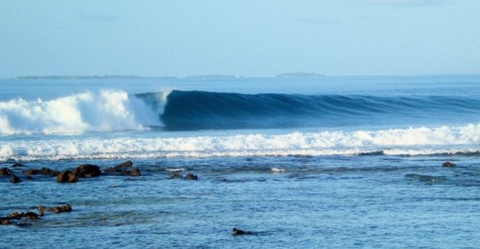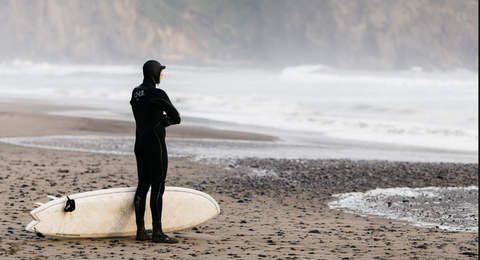How to Read Waves
When surfing, one of the most frequently asked questions is: how do waves break? How will a wave break over a specific ocean topography? When you have the answers to these questions, you'll know when and where to paddle – left, right, or if the wave isn't even worth your effort.

Knowing how to interpret when waves break and anticipate the direction and speed at which they break is one of the most important skills in surfing. 11x world champion Kelly Slater has always attributed his superiority over other competitors to his expert wave reading.

Learning how to read the waves is crucial whether you are a beginner, intermediate or professional. Choosing the right wave involves observation and opens a whole universe of advantages over other surfers. By mastering this art, you will surely catch the best waves more often, fall less often, be less tired, and, above all, have a lot of fun.
Right-hand vs. left-hand waves
A left is defined as a wave that breaks to the left side when you are paddling to stand on the board; that is, the surfer has to turn to the left to reach your wall. In the same way are the rights to the opposite side.
Right-hand wave

Left-hand wave

A-Frame

When a wave forms in a triangle, opening to both sides, it is called an "A Frame", like an inverted "V". In these cases, the wave breaks to the left and right simultaneously. If you are perfectly positioned at the peak of the wave – the starting point – you can choose to go left or right. These waves are great since it doubles the number of rides: 2 surfers can catch the same wave, going in opposite directions (one going right, the other going left).
Closeout

The first lesson is the simplest of all: you can't ride closeout waves because they don't have a face to which the surface of the board can adhere. a closeout wave is a wave that breaks all at once, abruptly from end to end.
Observation From Out of Water
It is of paramount importance to observe the waves breaking for some time before entering the sea. This is definitely an attitude that will make a big difference once you're out there. If it is a beach with a sandy bottom (beach break), at this point, it will be possible to get an idea of how the waves are forming, if there are many close-ups, what is the time between sets, how many waves per set, if there are more rights or lefts and also where the best waves on the beach are breaking.

Different Parts of the Wave

Lip
The top part of the wave that “pitches” from above when the wave is breaking. A big part of the wave’s power is located in the lip.
Shoulder (or “Face”)
The part of a wave that has not broken yet. Surfers ride from the area that is breaking, toward the unbroken section of the wave called “shoulder” or “face”.
This is where all the power of the wave is generated. Keeping your surfboard close to the pocket will ensure maximum speed throughout the wave.
White water (or Foam)
Is the white foam of the wave after it has broken.
Impact Zone
The spot where the lip crashes down on the flat water. You want to avoid getting caught in this zone when sitting or paddling our to the surf, as this is where the wave has most of its power.
Tube (or Barrel)
The tube is the cylinder-like section of the wave when they break. This is where surfers can ride inside. It's commonly called tube, or “barrel”. Surfers aim to be able to ride inside the tube of the wave.
Peak
The highest point on a wave, also the first part of the wave that breaks. When watching a wave on the horizon, the highest part of a wave is called the “peak”. Finding the “peak” is key to read and predict how a wave will break.

Point and Reef Breaks
In the case of places where the waves always break in the same direction, on rocky or coral backgrounds, reading becomes a little simpler. This is because the waves almost always break in the same place, in a defined peak. Even so, there are several factors that must be taken into account when analyzing and reading the waves, such as the influence of wind and tide, currents, and even the bottom quality, which can be harmed by an excessive sand cover on the stones for example.

Swell
Waves can come from many directions, which undoubtedly influences their formation. Different beaches or peaks receive different swells with better or worse quality. However, knowing this type of science takes time, and some courses help you better understand wave predictions, which can optimize your time when choosing where to surf.
Knowing which direction a swell is coming from will tell you if it will hit your region correctly. The swell direction is usually expressed in cardinal points (N, E, S, W). As a rule, a beach facing directly west will get bigger and better waves if the swell comes from the west. The swell direction is important — if the swell doesn’t hit your region correctly, you will not get good waves.
